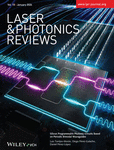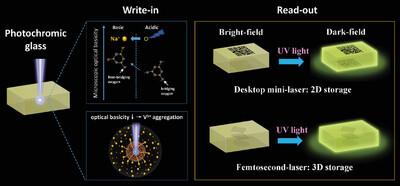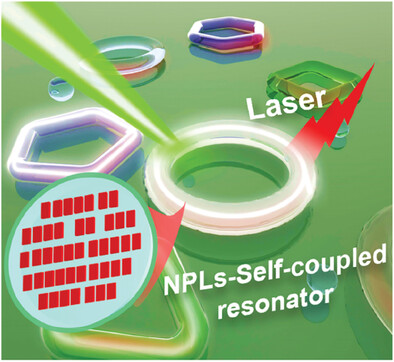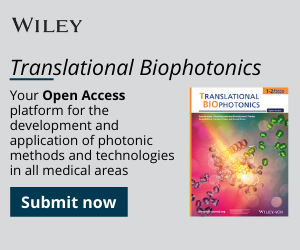Journal list menu
Export Citations
Download PDFs
Front Cover
Silicon Programmable Photonic Circuits Based on Periodic Bimodal Waveguides (Laser Photonics Rev. 18(1)/2024)
- First Published: 17 January 2024
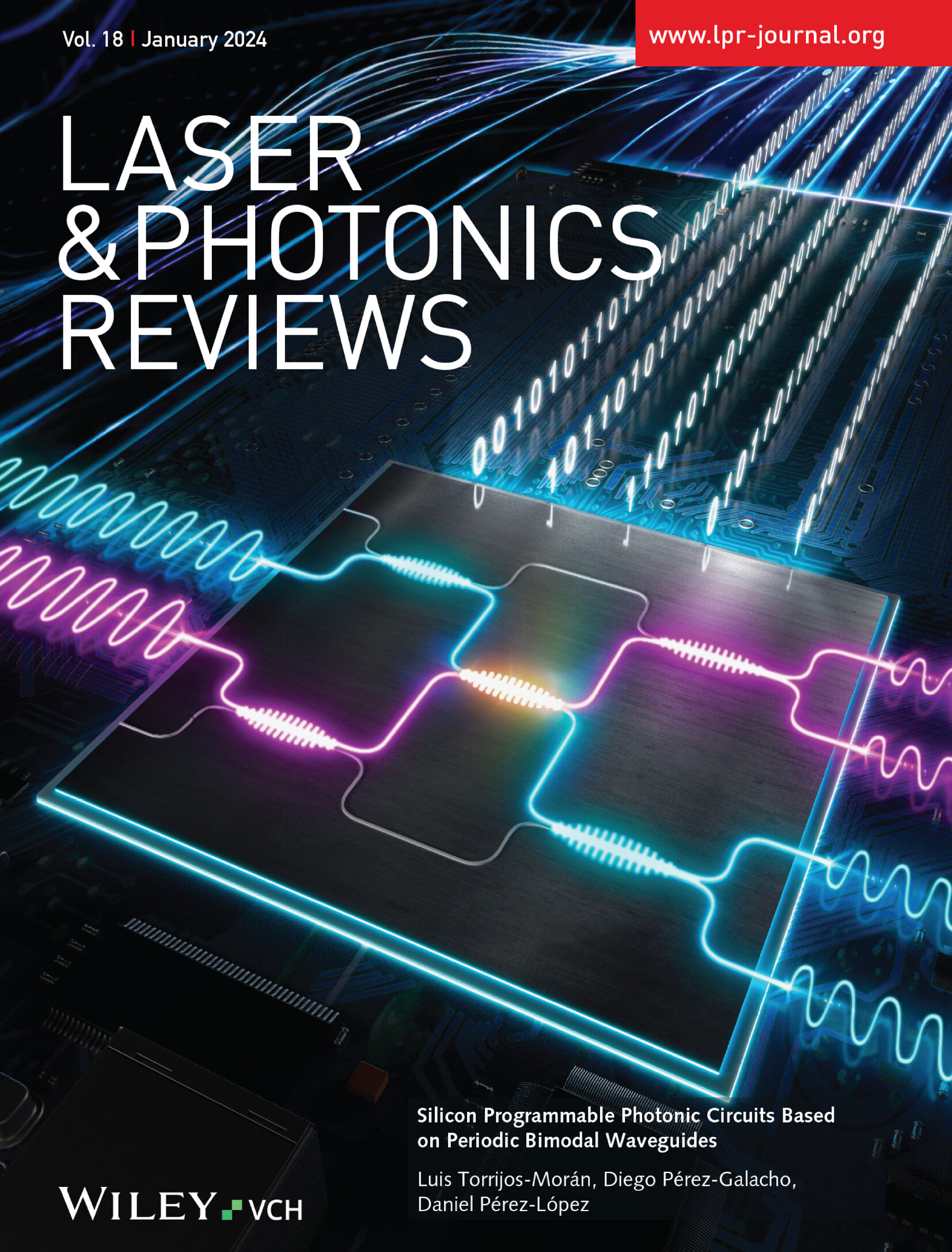
Silicon Programmable Photonic Circuits Based on Periodic Bimodal Waveguides
In article number 2300505, Luis Torrijos-Morán and colleagues propose an alternative tunable unit to address some of the most challenging limitations in programmable photonics: large-scale integration and space utilization. They demonstrate the use of periodic bimodal waveguides in the core of the programmable photonic circuit for optical matrix multiplication, with a resulting footprint that vastly outperforms conventional MZI-based approaches by more than two orders of magnitude.
Inside Front Cover
Lightwave-Driven Long-Wavelength Photomultipliers (Laser Photonics Rev. 18(1)/2024)
- First Published: 17 January 2024
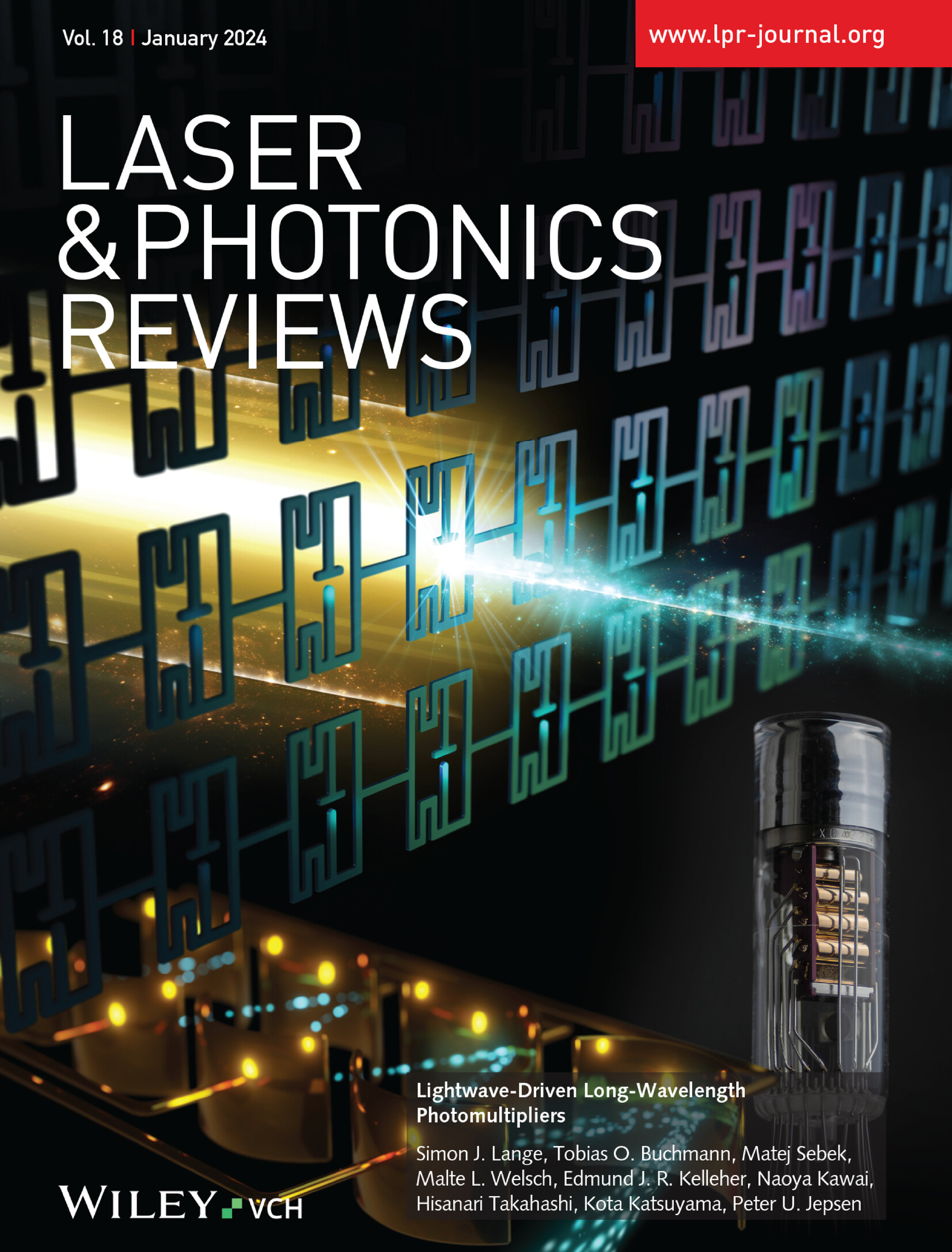
Lightwave-Driven Long-Wavelength Photomultipliers
In article number 2300417, Simon J. Lange and colleagues present a metasurface-based photomultiplier tube for long-wavelength lightwaves. The electric field of the incident lightwaves is concentrated onto highly sub-wavelength confinement volumes on the metasurface, which enables electrons on the metasurface to field emit into the electron multiplication unit of the photomultiplier tube for detection. The metasurface can be tuned for all infrared lightwave frequencies.
Inside Back Cover
Broadband Up-Conversion Mid-Infrared Time-Stretch Spectroscopy (Laser Photonics Rev. 18(1)/2024)
- First Published: 17 January 2024
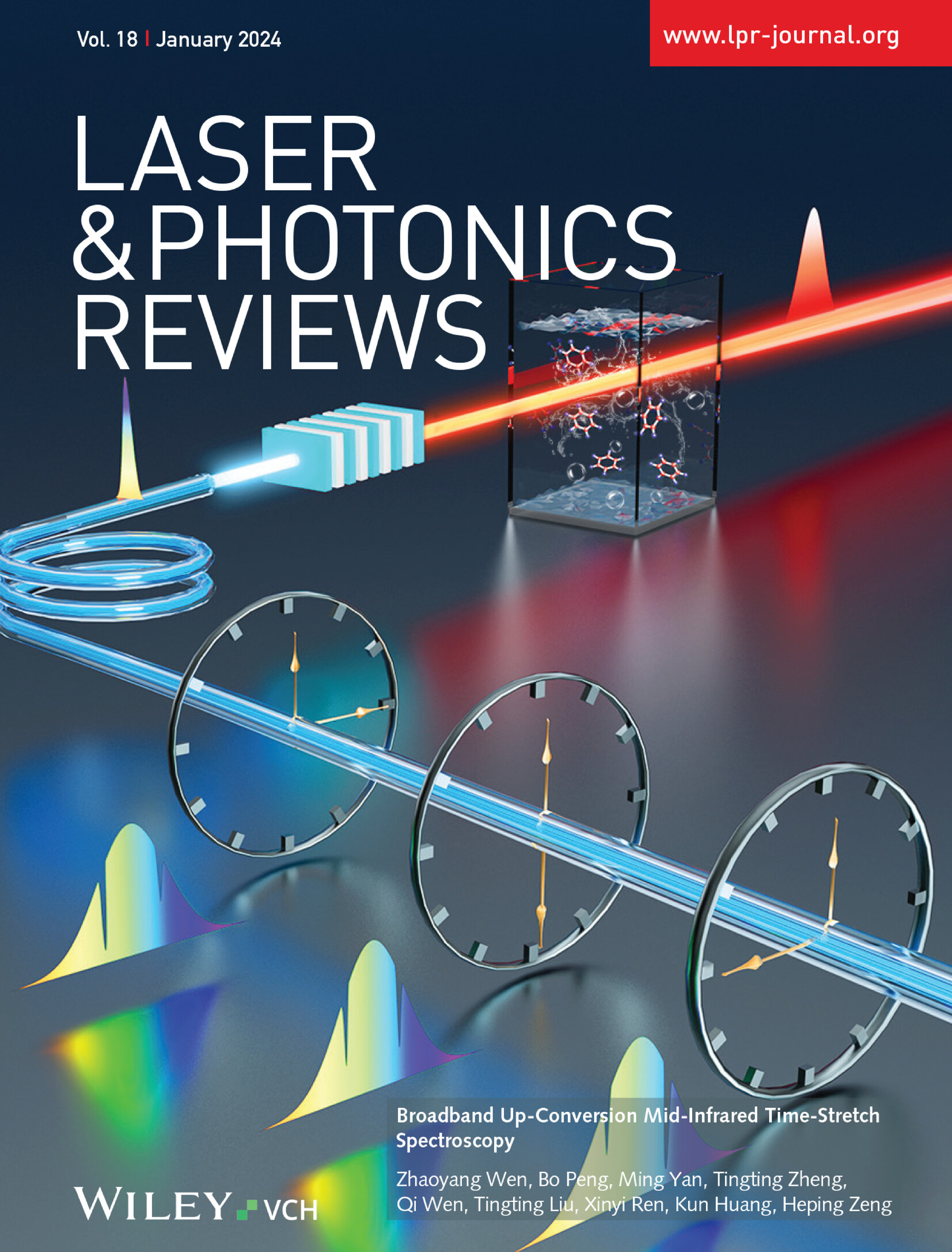
Broadband Up-Conversion Mid-Infrared Time-Stretch Spectroscopy
In article number 2300630, Zhaoyang Wen, Ming Yan, Heping Zeng, and colleagues present broadband up-conversion mid-infrared time-stretch spectroscopy for revealing transient, non-repetitive dynamics of molecules, which finds widespread applications from chemical reactions to biological diagnostics.
Back Cover
In-Plane 1.5 µm Distributed Feedback Lasers Selectively Grown on (001) SOI (Laser Photonics Rev. 18(1)/2024)
- First Published: 17 January 2024
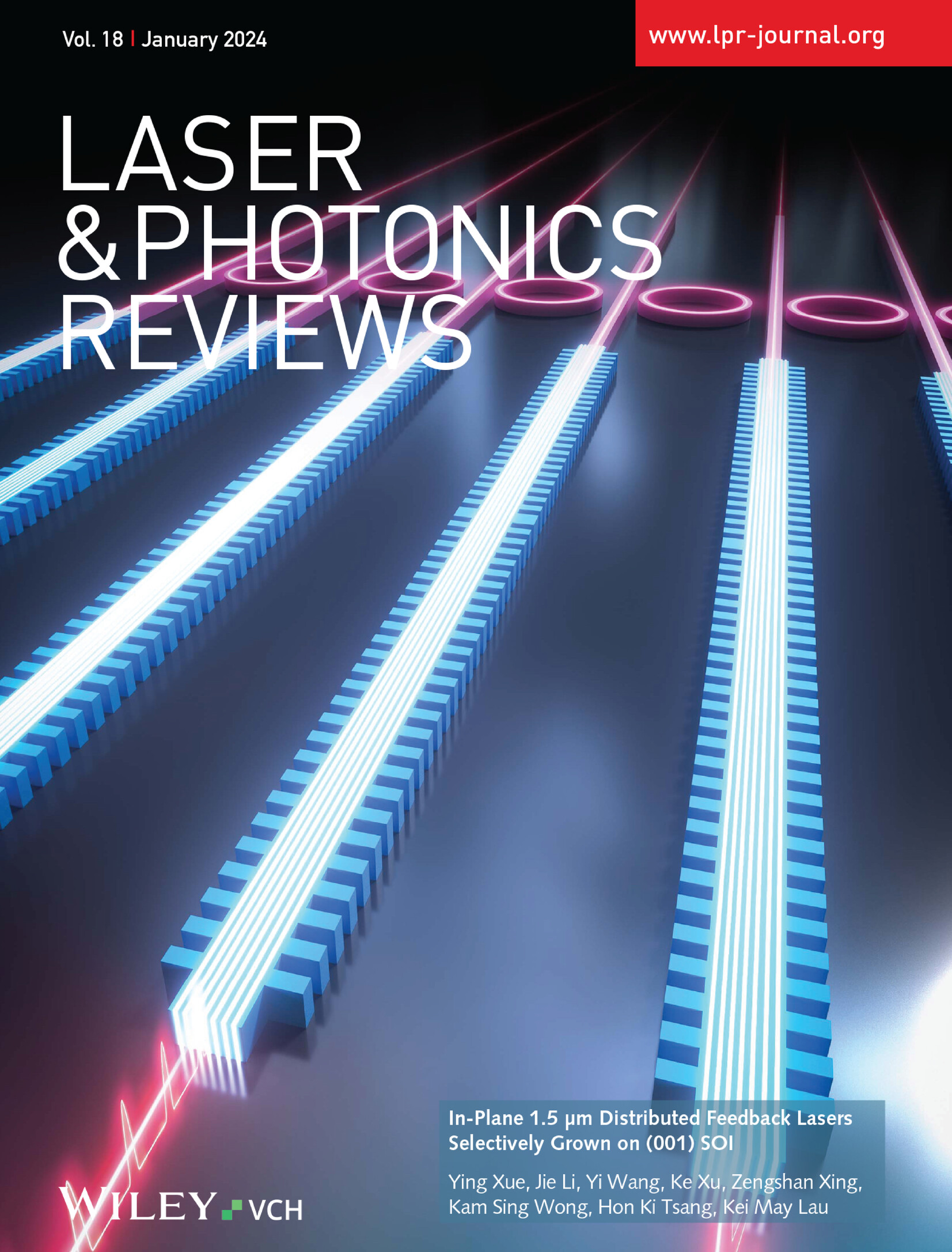
In-Plane 1.5 µm Distributed Feedback Lasers Selectively Grown on (001) SOI
In article number 2300549, Kei May Lau and colleagues present efficient and in-plane III–V distributed feedback (DFB) lasers selectively grown on (001) silicon-on-insulator (SOI) wafers. This approach enables the placement of lasers exactly where they are needed in the photonic integrated circuit in an elegant, scalable, and low-cost manner. The results pave the way towards photonic integration with efficient coupling between lasers and waveguides.
Masthead
Reviews
Laser-Textured Surfaces: A Way to Control Biofilm Formation?
- First Published: 14 November 2023
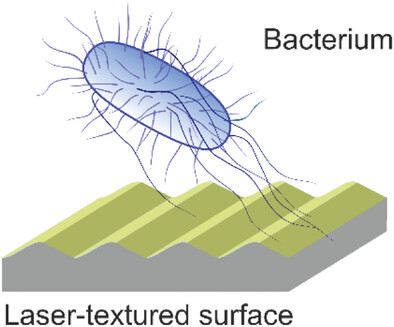
Laser-texturing appears as a simple and robust strategy for reducing bacterial adhesion of technical surfaces — an approach without chemicals or antibiotics, thus, avoiding bacterial resistances. However, the results reported in the literature are not coherent. This article orders the available literature by first reviewing the different laser-processing approaches and resulting surface textures and then providing a critical assessment of experimental conditions, revealing key bactericidal mechanisms, identifying anti-microbial surface designs, and discussing future directions.
Review
Microfiber Knot Resonators: Structure, Spectral Properties, and Sensing Applications
- First Published: 08 November 2023
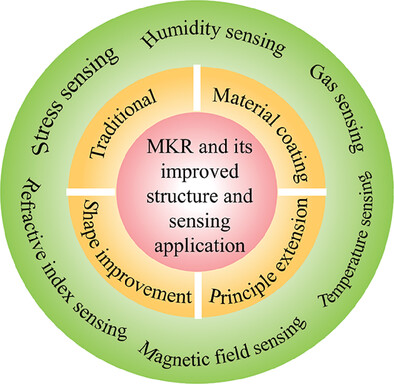
The preparation process and spectral characteristics of microfiber knot resonators (MKR) are introduced, and three new types of structures for enhancing sensing performance are described in detail. Then, the sensing applications of MKR sensors are summarized. Finally, the existing problems and the directions for further development are discussed.
Research Articles
Silicon Programmable Photonic Circuits Based on Periodic Bimodal Waveguides
- First Published: 29 September 2023
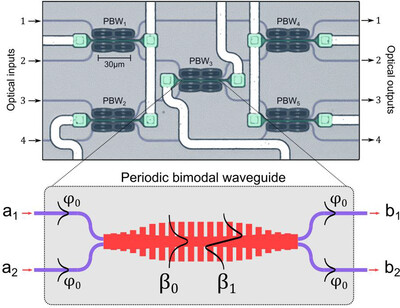
This study proposes an alternative tunable unit to address some of the most challenging limitations in programmable photonics: large-scale integration and space utilization. It demonstrates the use of periodic bimodal waveguides in the core of the programmable photonic circuit for optical matrix multiplication, with a resulting footprint that vastly outperforms conventional MZI-based approaches by more than two-orders of magnitude.
Lightwave-Driven Long-Wavelength Photomultipliers
- First Published: 04 September 2023

A novel class of long-wavelength lightwave detectors is demonstrated. The detector is based on using a metasurface as the photocathode in a photomultiplier tube. This changes the fundamental physical principle for electron emission from the photoelectric effect and into a field emission effect. As a result, incident photons can have arbitrarily low photon energy and still be detected.
Broadband Up-Conversion Mid-Infrared Time-Stretch Spectroscopy
- First Published: 24 August 2023
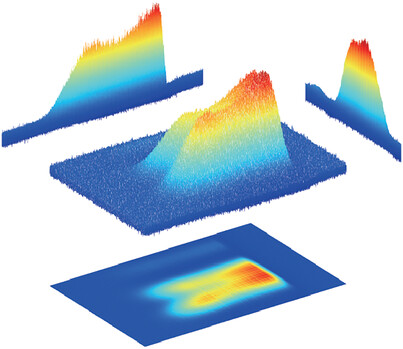
Broadband mid-infrared spectra are obtained at a speed of 77.5 Mspectra s−1 using coincidence-up-conversion and time-stretched detection. The single-shot signal-to-noise ratio (SNR) measured within 2 ns exceeds 200. The capability of probing transient spectra during evaporation opens up new opportunities for interrogating chemicals inside or behind a thick water layer, benefiting many chemical and biological applications.
In-Plane 1.5 µm Distributed Feedback Lasers Selectively Grown on (001) SOI
- First Published: 07 August 2023

Efficient III-V distributed feedback (DFB) lasers selectively grown on (001) silicon-on-insulator (SOI) wafers by lateral aspect ratio trapping (LART), showing low lasing thresholds and stable single-mode lasing at 1.5 µm, are presented. Unique features including threading dislocation-free III-V material, in-plane configuration, III-V-on-insulator structure, gratings with minimal non-radiative recombination, and a robust fabrication process are demonstrated.
Frontispiece
Controllable Deformation Modulated Multi-Functionality for Phase-Gradient Metamaterials (Laser Photonics Rev. 18(1)/2024)
- First Published: 17 January 2024
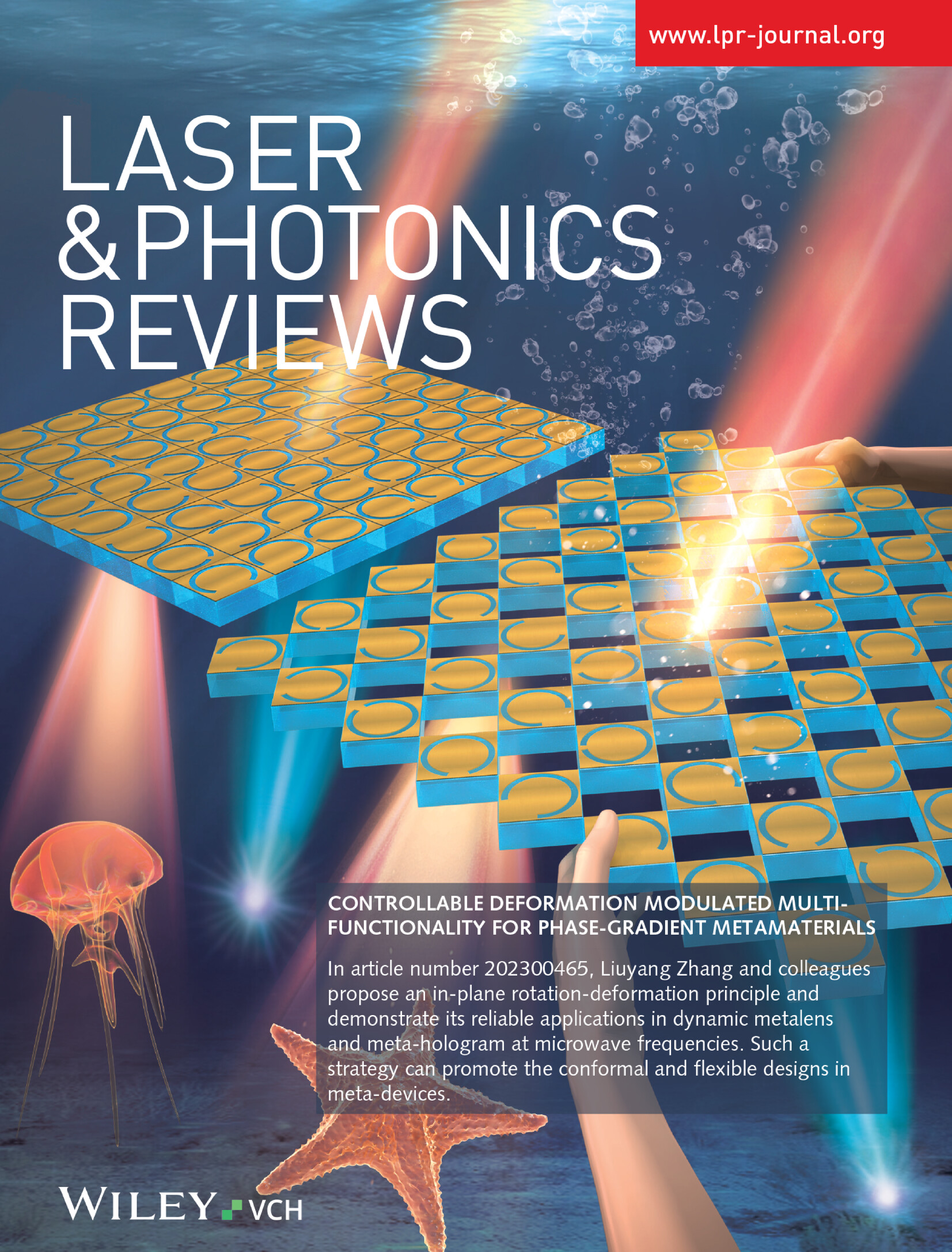
Controllable Deformation Modulated Multi-Functionality for Phase-Gradient Metamaterials
In article number 2300465, Liuyang Zhang and colleagues propose an in-plane rotation-deformation principle and demonstrate its reliable applications in dynamic metalens and meta-hologram at microwave frequencies. Such a strategy can promote the conformal and flexible designs in meta-devices.
Research Articles
Controllable Deformation Modulated Multi-Functionality for Phase-Gradient Metamaterials
- First Published: 08 September 2023
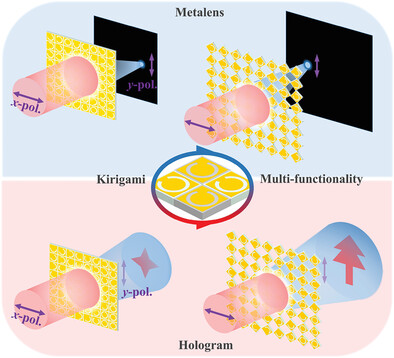
The modulation of phase-gradient metamaterials is demonstrated by the in-plane rotational deformation of split ring resonators integrated on a kirigami hyper-elastic substrate. Compared with previous kirigami metamaterials replying on the out-of-plane deformation, this mechanical reconfiguration principle only needs the in-plane deformation and is successfully applied toward advanced applications in dynamic metalenses and meta-holograms.
Higher-Order States in a Non-Hermitian 3D Topological Photonic Crystal
- First Published: 14 November 2023
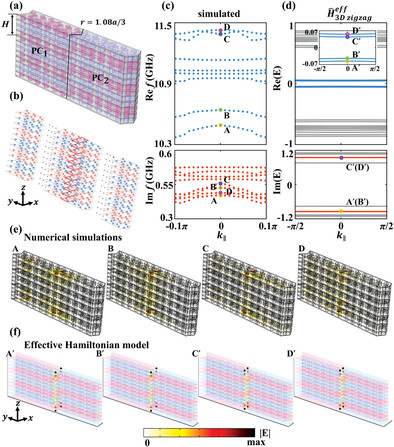
A method is proposed to construct effective Hamiltonians describing states and the corresponding energies at the gain-loss domain walls for higher-order topological insulators. Non-Hermitian 3D topological photonic crystals generating arbitrary-located, arbitrary-shaped, and robust topological hinge states propagating at gain-loss domain walls are constructed, which can be actively controlled by non-Hermiticity.
Momentum-Space Scattering Extremizations
- First Published: 17 September 2023

Related to the question of how to orientate an arbitrary opaque object toward the sun to cast the largest or smallest geometric shadow, this study manages to solve an analogous problem in wave optics and answers the following fundamental question in Mie theory: under which incident direction and polarization will an object scatter the most or least light?
High-Power AlGaN-Based Ultrathin Tunneling Junction Deep Ultraviolet Light-Emitting Diodes
- First Published: 25 August 2023
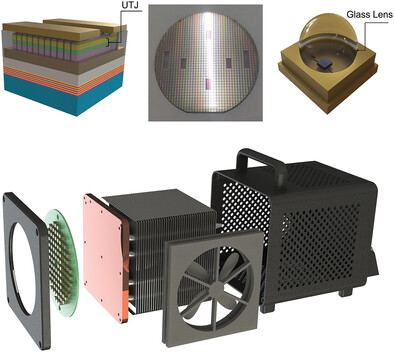
The lowest operating voltage for 275 nm deep ultraviolet (UV) light-emitting diodes reported to date is achieved by introducing an ultrathin tunneling junction technology platform to overcome the high series resistance and deep-UV light absorption problem. Complete surface inactivation by the high-efficiency sterilization deep-UV light source at a long irradiation distance is achieved within only seconds.
Enhanced Asymmetric Light-Plasmon Coupling in Graphene Nanoribbons for High-Efficiency Transmissive Infrared Modulation
- First Published: 03 September 2023
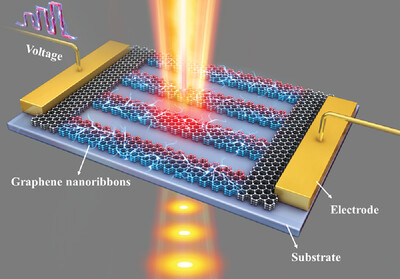
A transmission-type graphene plasmonic modulator is developed that simultaneously exhibits high modulation efficiency and broad operating bandwidth. Through dielectric environment engineering and graphene structure design, the modulation efficiency has been improved from 4% to 41% at 1530 cm−1, while maintaining the bandwidth as large as 230 cm−1. The modulator outperforms previous transmission-type graphene plasmonic modulators in both efficiency and bandwidth.
Frontispiece
Deep Learning-Enabled Pixel-Super-Resolved Quantitative Phase Microscopy from Single-Shot Aliased Intensity Measurement (Laser Photonics Rev. 18(1)/2024)
- First Published: 17 January 2024
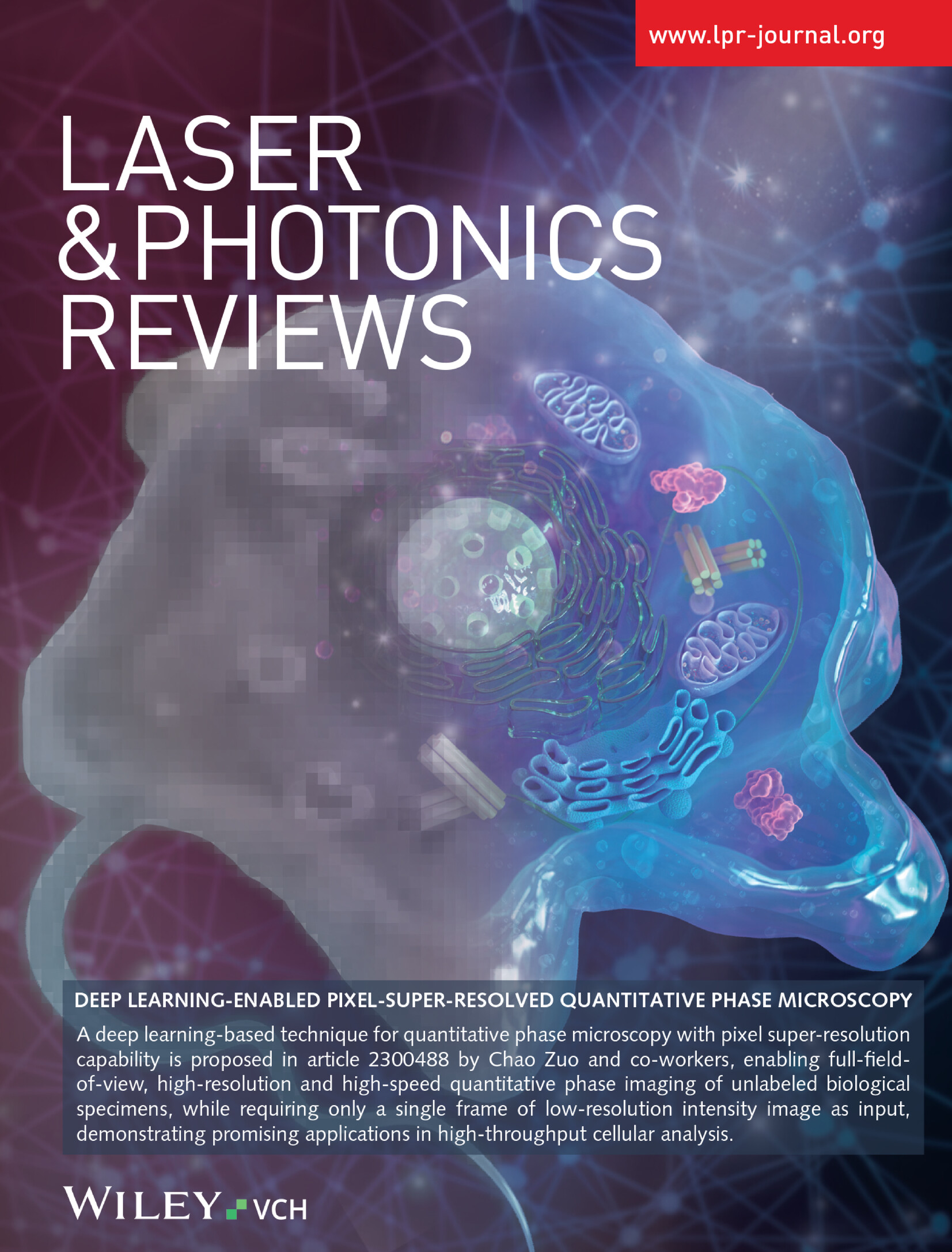
Deep Learning-Enabled Pixel-Super-Resolved Quantitative Phase Microscopy
A deep learning-based technique for quantitative phase microscopy with pixel super-resolution capability is proposed in article 2300488 by Chao Zuo and co-workers, enabling full-field-of-view, high-resolution and high-speed quantitative phase imaging of unlabeled biological specimens, while requiring only a single frame of low-resolution intensity image as input, demonstrating promising applications in high-throughput cellular analysis.
Research Articles
Deep Learning-Enabled Pixel-Super-Resolved Quantitative Phase Microscopy from Single-Shot Aliased Intensity Measurement
- First Published: 17 September 2023
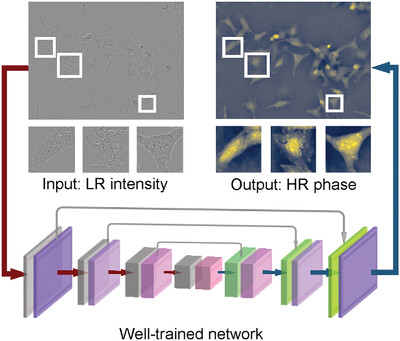
A deep learning-based technique for quantitative phase microscopy with pixel super-resolution capability is proposed, which enables full-field-of-view, high-resolution, and high-speed phase imaging of unlabeled biological specimens with only a single frame of a low-resolution intensity image as input, demonstrating promising applications in high-throughput cellular dynamics analysis.
On-Chip Light Polarization Management by Mapping the Polarization Information to Phase Shift
- First Published: 09 November 2023
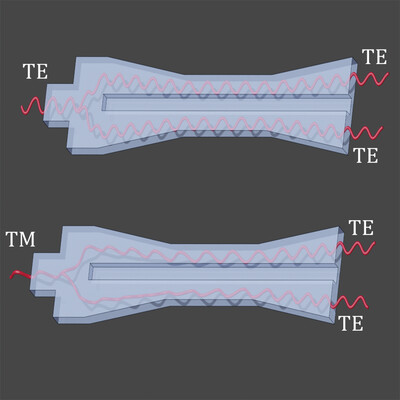
A novel concept called polarization phase mapping is proposed for on-chip light polarization management, which encodes the information between the light polarization in one waveguide and the relative light phase shift in another two waveguides. With this bi-directional mapping approach, the fundamental basis of polarization management has shifted from polarization adjustment to phase regulation.
Large Field-of-View and Multi-Color Imaging with GaP Quadratic Metalenses
- First Published: 08 November 2023

A single-layer metalens solution achieving simultaneously multi-color and wide field-of-view imaging when combined with standard camera color filters is presented, based on a GaP platform. Complemented with computational imaging techniques, state-of-the-art imaging performance is demonstrated. This ultra-compact solution is compatible with single-step photolithography fabrication process, making it highly scalable and cost-effective, and thus suitable for consumer electronics applications.
Tunable Kerker Scattering in a Self-Coupled Polaritonic Metasurface
- First Published: 15 November 2023
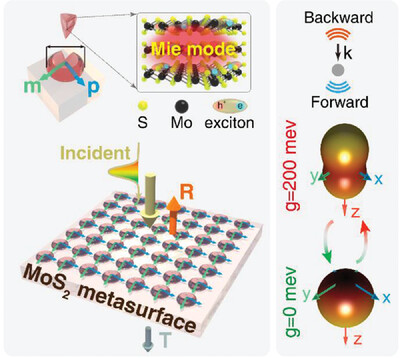
Tunable directional/Kerker scattering by the dielectric metasurface is achieved through the concept of strong light–matter interaction. The MoS2 self-coupled metasurfaces are built, showing the forward/backward scattering ratio up to 20 and the thermal tunability of directional scattering. This work significantly advances the knowledge and understanding of coherent light–matter interactions for controlling the light flow in the far field.
Multi-Energy X-Ray Linear-Array Detector Enabled by the Side-Illuminated Metal Halide Scintillator
- First Published: 05 September 2023
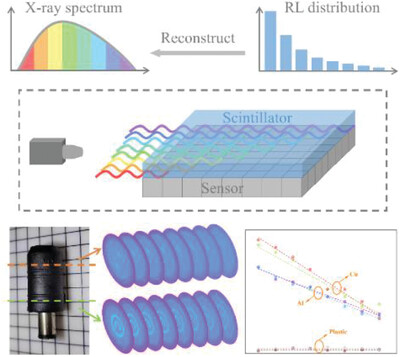
An innovative multi-energy X-ray linear-array detector is proposed based on a side-illuminated X-ray scintillator, enabling the convenient acquisition of X-ray spectral information through a visible-light image sensor. By analyzing the distribution of scintillation intensity on the side-illuminated X-ray scintillatior and constructing mathematical models, the energy spectrum of the incident X-ray can be reconstructed, and multi-energy CT imaging is successfully demonstrated.
Assembling Two Self-Trapped Exciton Emissions in 0D Metal Halides with Near-Unity Quantum Yield and Zero Thermal-Quenching Photoluminescence
- First Published: 01 November 2023
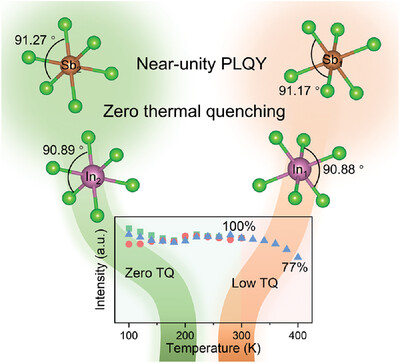
To design thermal-quenching resistant and high-performance photoluminescent metal halides, a class of K3InCl6:Sb3+ metal halides with two individual self-trapping excitons emissions is explored, while also achieving near-unity quantum efficiency. The as-synthesized K3InCl6:Sb3+ crystals show remarkable stability and high-performance photoluminescence, indicating great potential in manufacturing high-performance and high-power light-emitting diodes.
Generic Vectorial Hologram Based on Simultaneous and Independent Amplitude and Phase Modulation of Orthogonal Polarization States via Single Completely Spin-Decoupled Meta-Particles
- First Published: 13 October 2023
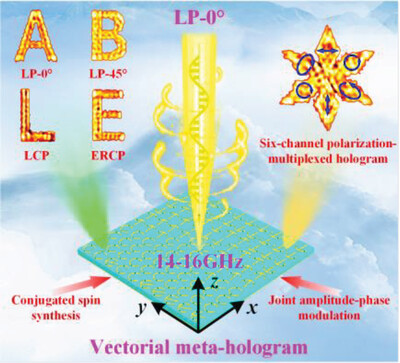
Single completely spin-decoupled meta-particles are elaborately designed and further employed to simultaneously and independently modulate the orthogonal circularly polarized basis vectors, and multiple vivid meta-holograms with versatile polarization are generated. A generic vectorial meta-hologram with arbitrary polarization-multiplexing is also constructed according to the superposition and decomposition of electromagnetic fields.
Ultra-Low-Crosstalk Silicon Arrayed-Waveguide Grating (De)multiplexer with 1.6-nm Channel Spacing
- First Published: 16 October 2023
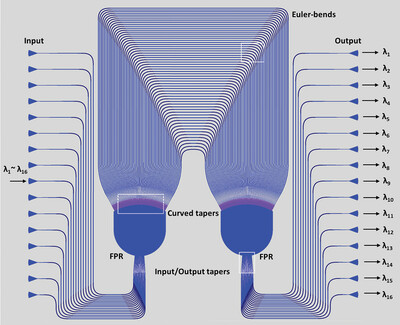
A high-performance silicon arrayed-waveguide grating (AWG) with 1.6-nm channel spacing is proposed and realized for dense wavelength-division (de)multiplexing systems. For the present AWG, the arrayed waveguides are broadened uniformly to be far beyond the singlemode regime, so that random phase errors and propagation loss are minimized even without any additional requirement for the fabrication process. Particularly, Euler-bends are introduced for the arrayed waveguides to shrink the device footprint and suppress undesired high-order modes excitation.
Experimental Demonstration of Quantum Steering Swapping with Gaussian Entangled States
- First Published: 04 October 2023
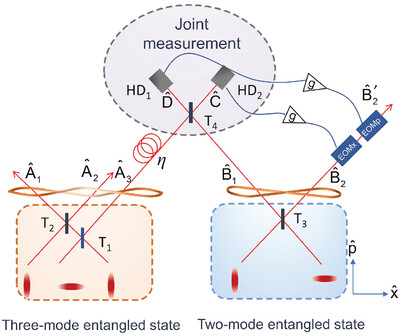
Quantum steering swapping of Gaussian entangled states in a lossy channel is experimentally demonstrated. By choosing the optimum gains in classical channels, the one-way and two-way steerabilities of a new three-mode Gaussian state located in distant nodes are obtained. This work provides a feasible method to establish quantum steering between two space-separated independent Gaussian states without direct interaction.
Crystalline–Amorphous Heterojunction for a Metal Halides Single Crystals X-Ray Detector with Substantially Increased Sensitivity
- First Published: 02 October 2023
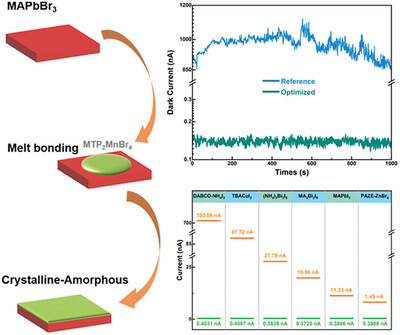
A crystalline–amorphous heterojunction preparation method is developed for noise suppression in single crystals (SCs) X-ray detectors. MAPbBr3 as represented, the optimized device dark current is reduced from ≈1000 to ≈0.12 nA, exhibiting excellent X-ray detection performance. Further, six other SCs are selected to verify the generality of this approach, all exhibiting much-enhanced sensitivity.
Antireflective Multi-Dielectric Metasurfaces Operating in the Visible
- First Published: 10 November 2023
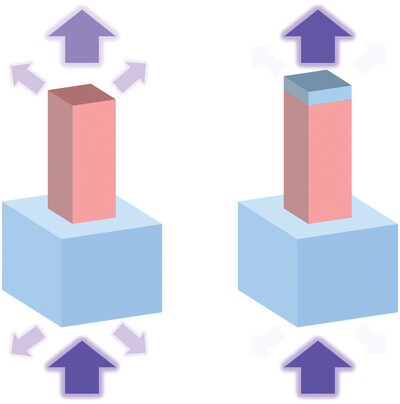
Multi-dielectric metasurfaces that are patterned in a single nanolithography step suppress scattering suffered by their single-dielectric counterparts. Measurements on, and simulations of, SiO2/Ta2O5 anti-reflective metalenses designed for 461 nm showcase how focusing efficiencies can improve from ≈ 55% to ≈ 90% at low numerical apertures and from ≈ 35% to ≈ 65% at high numerical apertures.
Scalable Synthesis of Lead-Free Tetramethylammonium Manganese Halides for Highly Efficient Backlight Displays
- First Published: 03 October 2023
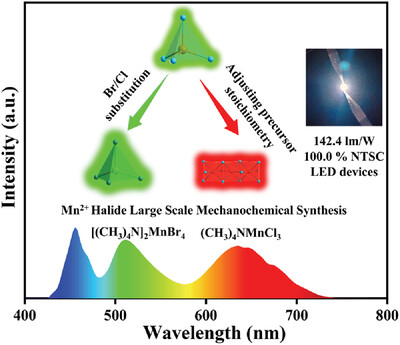
Lead-free metal halides are clean candidates for future lighting and displays. A facile, scalable, and eco-friendly ball-milling method is presented to obtain tetramethylammonium manganese halides. The [(CH3)4N]2MnBr4 have a near-unity green emission efficiency and can be combined with (CH3)4NMnCl3 red emitters to fabricate light emitting diodes, achieving a maximum luminous efficacy of 142.40 lm W−1 and wide color gamut of 100% NTSC.
Photoirradiation-Gated Excitation-Dependent Room-Temperature Phosphorescence in Through-Space Charge Transfer Molecules
- First Published: 12 October 2023
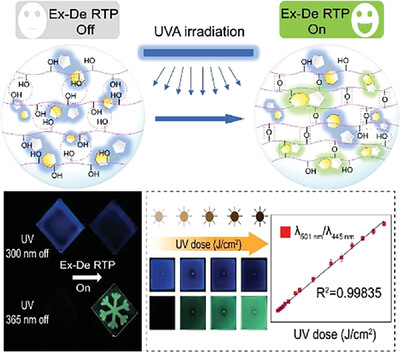
A concise and facile strategy is presented to achieve photoirradiation-gated excitation-dependent (Ex-De) persistent room-temperature phosphorescent by regulating the emission of different channels in through-space charge transfer molecules. Based on these remarkable features, photoirradiation-gated Ex-De afterglow emission is successfully applied in the quantitative determination of UV irradiation dose and the permanent recording of UV irradiation history, which can be read on-demand.
Humidity-Induced Reversible Crystallization of Laser-Printing Perovskite Quantum Dots in Glass
- First Published: 08 November 2023
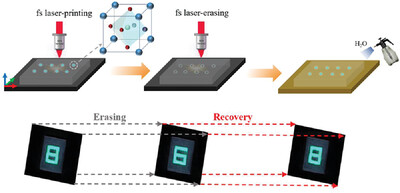
The printing and erasing of CsPb(Cl/Br)3 perovskite quantum dots in a transparent glass medium are performed by fs laser irradiation and humidity control. This process can be repeated over multiple cycles without tedious operations, and the patterns of laser writing-erasing-recovering with stable and reversible luminescence are demonstrated to be applicable for information encryption/decryption.
NIR-II Luminescence in Cr4+ Activated CaYGaO4 toward Non-Invasive Temperature Sensing and Composition Detection
- First Published: 29 October 2023
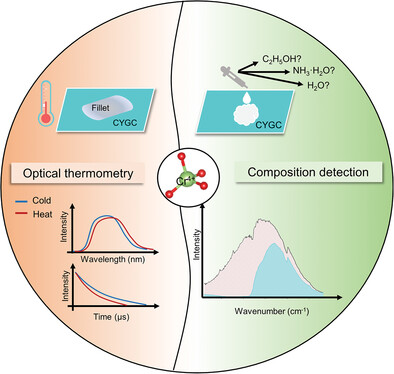
Cr4+-activated olivine-type CaYGaO4 phosphors with broadband near-infrared II luminescence are reported for non-invasive temperature and chemical composition detection. Cr4+ ions form [CrO4] tetrahedrons by site occupancy confinement, and their luminescence properties are systematically analyzed. Moreover, the as-fabricated flexible film is successfully used to monitor the real-time temperature of the fillet and the mass fractions of NH3 in ammonia.
Chirality-Switching and Reconfigurable Spin-Selective Wavefront by Origami Deformation Metasurface
- First Published: 05 October 2023
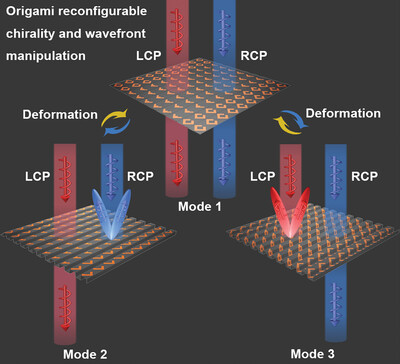
Origami-based reconfigurable metasurfaces are proposed for simultaneous spin-selective transmission and electromagnetic wavefront manipulation by changing the folding pattern of the meta-structure. The concept is demonstrated both in theory and experimentally by two kinds of chiral meta-devices, which enable functionalities including tunable circular dichroism and switchable chiral anomalous reflection. .
Graphene Oxides as Epsilon-Near-Zero Platforms Operating in Terahertz Frequency Range
- First Published: 15 November 2023
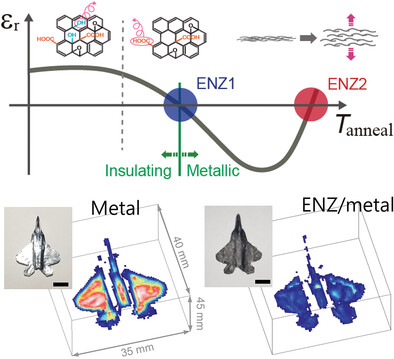
Terahertz epsilon-near-zero (ENZ) material is achieved by thermal annealing of graphene oxides in the transition from insulating to metallic phases. The flexible and free-standing ENZ films can be transferred to curved surfaces and hybridized with metamaterial patterns. Extraordinary light-matter interaction in the ENZ layer enables superabsorbers, hyper-resolution imaging, and ultrasensitive sensing for low index materials.
High-Performance NIR Emission in Chromium-Doped Garnet Phosphors Enabled by Structure and Excitation Regulation
- First Published: 25 October 2023
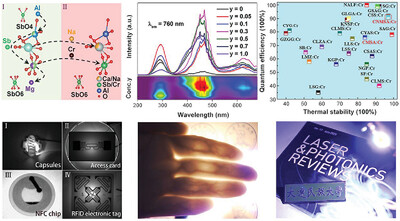
A chemical unit co-substitution strategy is proposed to realize the excitation regulation and achieve high-performance near-infrared (NIR)-emission in Ca3-yNayMg1-ySb2-xAl2+yO12:xCr3+ phosphors. The structure and spectroscopy regulation process, NIR luminescence behavior, and related crystal field strength parameters are investigated. Finally, the NIR phosphor-converted light-emitting diode is fabricated, and the potential applications toward nondestructive detection, veins imaging, and night vision surveillance are demonstrated.
Metal Halide CsCu2I3 Flexible Scintillator with High Photodiode Spectral Compatibility for X-Ray Cone Beam Computed Tomography (CBCT) Imaging
- First Published: 04 October 2023
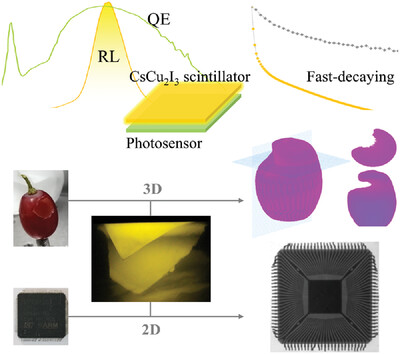
An ideal scintillator material should not only possess adequate light output but also demonstrate high spectral compatibility with the typically used photosensors. Consequently, thanks to its excellent spectral compatibility, the CsCu2I3 scintillator exhibits superior image signal intensity compared to Cs3Cu2I5. This allows CsCu2I3 to reveal details in X-ray imaging that Cs3Cu2I5 cannot.
Photochromic 3D Optical Storage: Laser-Induced Regulation of Localized Optical Basicity of Glass
- First Published: 15 October 2023
Cooperative Passivation Exciton Quenching Triggers Surpassing 30% External Quantum Efficiency for a Deep-Blue Organic Light-Emitting Diode
- First Published: 25 October 2023

An innovative molecular design strategy employing an asymmetric D–A–D' structure is proposed. This strategic approach leads to the establishment of multiple reverse intersystem crossing (RISC) channels and yields superior packing modes and morphology. The corresponding device achieves an exceptional external quantum efficiency of 31.1% with an emission peak at 457 nm, one of the preeminent materials within the deep blue region.
Coexistence of Chiral and Antichiral Edge States in Photonic Crystals
- First Published: 17 October 2023
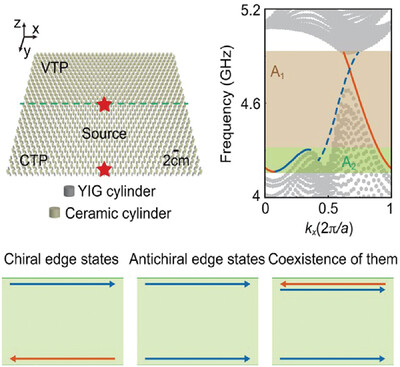
The coexistence of chiral and antichiral edge states is proposed for photonic crystals by a modified Haldane model. Berry curvatures of this system can be flexibly diffused, converged, or flipped by endowing different parameters, exhibiting exotic topological interface/edge behaviors, such as topological bound states with ideally zero dispersion. This demonstrates promising applications in information processing and photonic computing.
Colloidal Nanoplatelets-Based Soft Matter Technology for Photonic Interconnected Networks: Low-Threshold Lasing and Polygonal Self-Coupling Microlasers
- First Published: 15 November 2023
Crystallization of Na2SrGe6O14:Cr3+,Yb3+ Glass Ceramics Enabling a Watt-Level Output Power NIR-I/NIR-II Lighting Source
- First Published: 06 October 2023

Na2SrGe6O14:Cr3+ glass-ceramic (GC) fully crystallized from glass shows a broadband near-infrared (NIR) emission with a high external quantum yield of 49.2%. Cr3+ → Yb3+ energy transfer enables a broadened emission in the NIR-I and NIR-II range and enhanced thermal stability of 65.0%. The derived NIR GC-converted LED exhibits watt-level output power of 922.4 mW and shows potential application in night monitoring. .
Multinary Cu─In─Zn─S-based Quantum-Dot Electroluminescence and Implications on Device Designs
- First Published: 27 October 2023
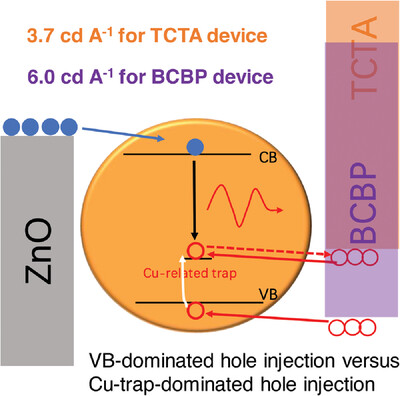
The electroluminescence mechanism of Cu─In─Zn─S quantum dots (QDs) is demonstrated to be trap-related recombination. Hole transporting layers (HTL) with low highest occupied molecular orbital energy levels can suppress the hole transfer from QDs to the HTL. Consequently, quantum-dot light-emitting diodes with 2,2′-bis(4-(carbazol-9-yl)phenyl)biphenyl as the HTL exhibit a higher efficiency of 6.0 cd A−1 due to efficient hole injection and limited back transfer of holes.
Integrating 2D Materials and Plasmonics on Lithium Niobate Platforms for Pulsed Laser Operation at the Nanoscale
- First Published: 08 November 2023
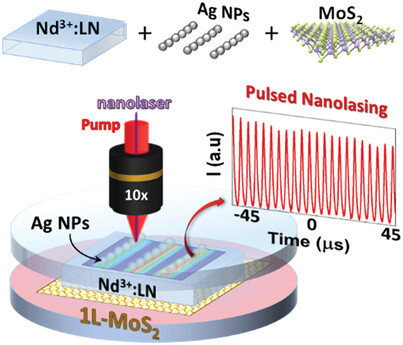
Self-Q switched nanolasing is demonstrated by developing a compact monolithic solid-state laser platform. The device combines the optical gain delivered by Nd3+:LiNbO3 crystal, the extreme spatial confinement supplied by plasmonic Ag nanoparticle chains, and the temporal control provided by a single layer MoS2 acting as a saturable absorber. Stable and high-quality short laser pulses are achieved at the nanoscale.




